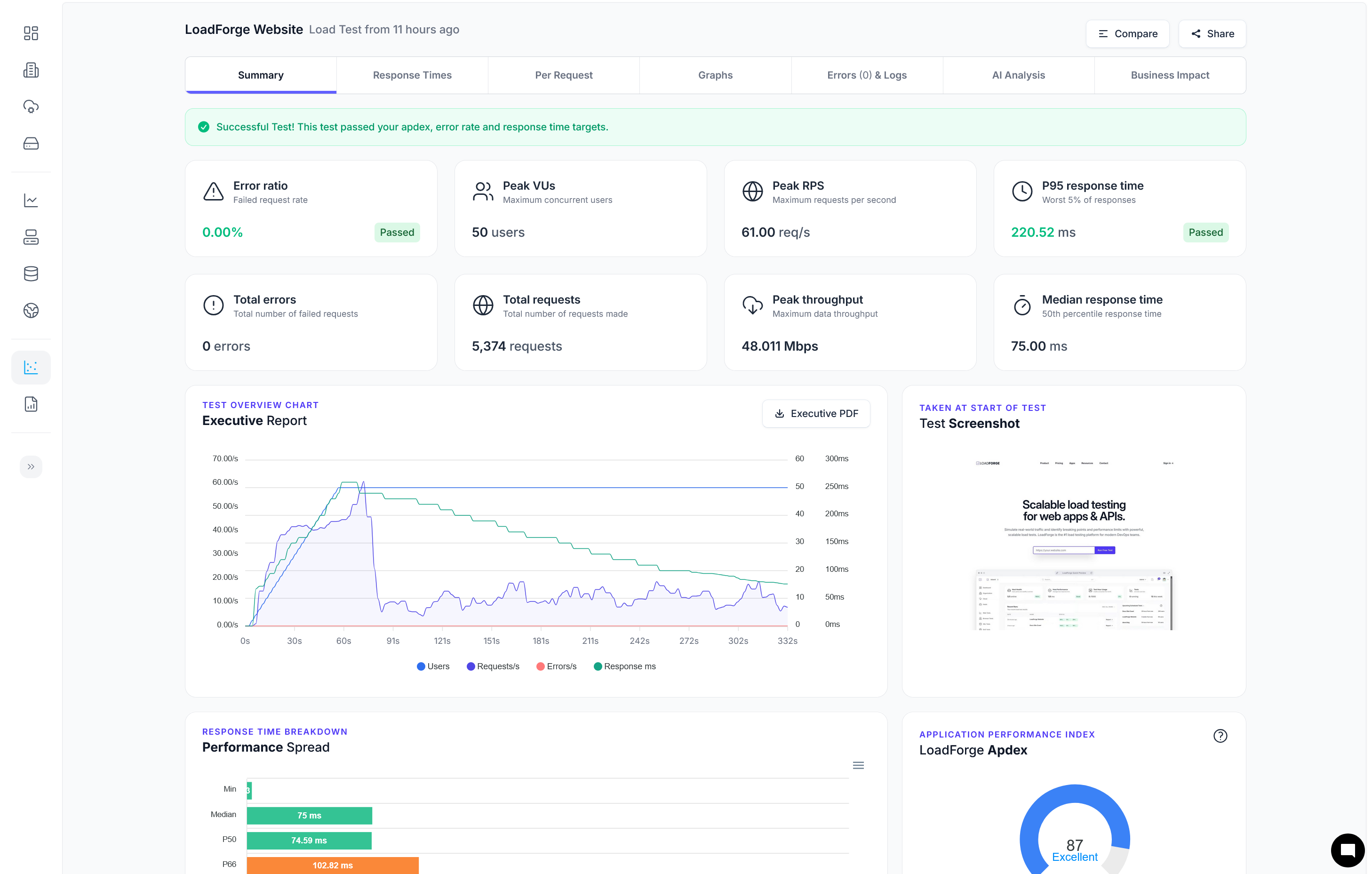
Improved Anomaly Detection
We've just released automatic anomaly detection for all LoadForge tests! Now, LoadForge automatically analyzes the last 5 runs of any test to establish a performance baseline. It then monitors for significant deviations in key metrics.


